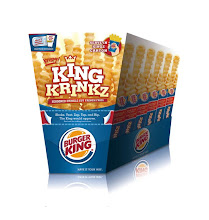
•
Hormel Foods Corp. and Mexico’s
Herdez del Fuerte SA de CV will expand their joint venture designed to market Mexican foods in the U.S. With demand for meat declining, Hormel is seeking to sell more products south of the border. Mexican brands are growing in popularity both due to the interest in Hispanic food and the growing number of Hispanics living in the U.S. For example,
Coke has found demand for its Mexican-bottled cola growing in the Southeast where immigration from Mexico is increasing. The product is sweetened with cane sugar instead of HFCS, so that is also contributing to the cross-border sales. Some of the Mexican brands marketed by Hormel include
Chi-Chis, La Victoria and
Dona Maria. Revenue is expected to be $200MM right out of the starting gate. The joint venture’s name will be
MegaMex.
•
Sainsbury in the U.K. is riding a spike in same-store sales of 7.8% by launching up to 8K non-food products online, double the range stocked in the stores now. In addition, Britain’s #3 grocery retailer (16% market share) is planning on taking advantage of a weak real estate market by opening up 150 convenience stores in the next two years. The growth will produce an extra 2.5 million sq ft of selling space. Market leader
Tesco (31.5%) had a smaller 4.3% rise in sales, but is also ramping up online offerings especially in the clothing category.
•
Coca-Cola has opened two bottling plants in China to handle exploding demand. The company describes The Middle Kingdom as its “fastest growing market,” with sales up 19% last year and 10% in the first quarter alone of 2009. In contrast, sales elsewhere in the world grew a meager 2%. One of the first western companies to tackled the Chinese market, the brand has a euphonic Chinese name which means “pleasing to the mouth & promoting happiness.” As a result, the Georgia cola giant has approx. 50% market share there and plans to invest up to $2bn over the next three years, 2x its investment over the past three decades. While per capita consumption is only 25 bottles/year, sheer numbers have allowed China to overtake Mexico as its third-largest market (average U.S. consumption is 500 bottles/year). The latest additions to Coke’s Chinese operations are in Jiangxi and Xinjiang provinces in the far west, and bring the total of bottling plants to 40. In March, Coke tried to grow its non-carbonated business in China by trying to buy
Huiyuan Juice, but the government blocked the sale. Instead the company will try to push its own brand,
Minute Maid. With over 40% of the juice market, Huiyuan will be a tough challenger. The company is trying to be a good corporate citizen, too, by sponsoring China’s Olympic Torch Relay, constructing a $90MM research facility in Shanghai, and donating $12MM to rebuild schools after 2008’s disastrous Sichuan earthquake.
• Prior to the break-up of the old Soviet Union, comedian
Yakov Smirnoff made a good living pointing out the heavy-handed ways of Soviet bureaucracy. It would seem some things never change. Despite the run-up in commodity prices around the globe, Russian paramount leader (oops, Prime Minister)
Vladimir Putin has told Russian food retailers to lower prices— or else. Putin left a meeting recently to pay a surprise visit to the Moscow branch of the
Perekrestok supermarket, one of Russia’s biggest retail chains. With a delegation of food producers following him, Putin demanded to know why retail prices were substantially higher than produce costs. According to the newspaper
Kommersant Daily, Putin got into a Nixon-Khrushchev-style “kitchen debate” arguing over things like mark-ups on sausages (52%) and pork products (100%). “This is twice as much. Is this normal? It’s very high,” claimed Putin.
Yuri Kobaladze, president of the
X5 Retail Group which owns Perekrestok, then promised “Tomorrow we will cut the price.” Putin has been conducting what is widely seen as “stunts,” including a visit to an idle cement factory that featured a pen-throwing incident involving the factory owner, to take the heat off his government during the current financial crisis that has seen Russian GDP contract by 11% in the past 12 months.
•
Pizza Hut is pushing hard in
Thailand after dumping its franchisee there, Central
Restaurant Group. By year-end, 15 new outlets will join the 81 already open, with 10 outlets dedicated to home delivery 5 for dine-in.
This blog includes excerpts from a weekly round-up of food industry & food licensing news provided free to Broad Street Licensing Group's clients, and as a paid subscription service (6 months $695; 1 year $1,125).
Too busy to keep up with the news wires & publications about the food business? If you or your company would like to subscribe to our news service, call Danielle Foley at Broad Street Licensing Group (tel. 973-655-0598) and ask for your free sample or click on our website.

.gif)





























